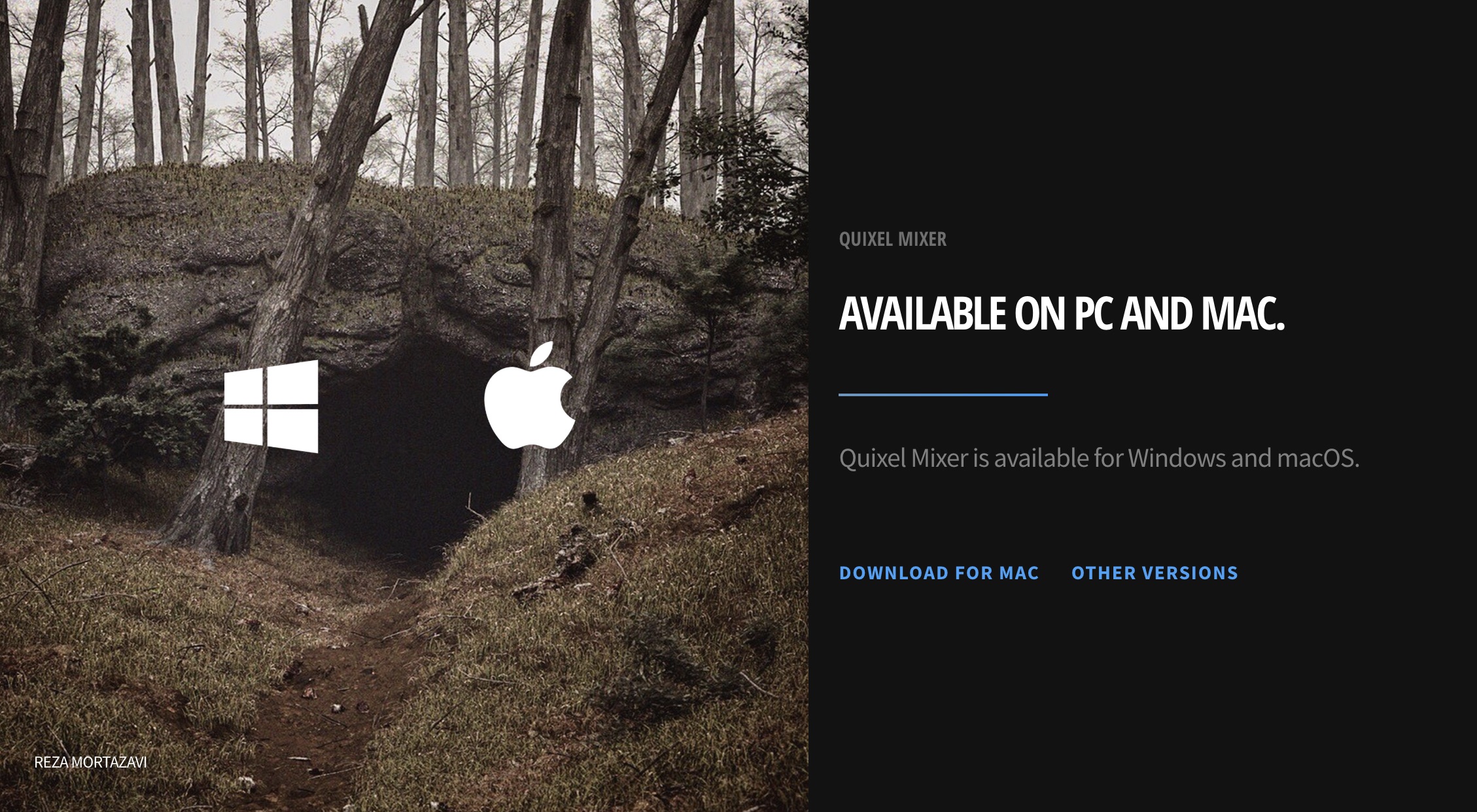

To learn more about Material ID, click here. *You can not add a Material ID Mask to Paint, Noise, and Liquid Layers. You can do this by either right-clicking on a layer and selecting “Add ID Mask” or by selecting your layer and clicking the Material ID mask icon on the bottom of the stack or pressing the shortcut I. You can add a material ID mask to a layer. To learn more about Paint Mask, click here. *You can not add a Paint Mask to Paint, Noise, and Liquid Layers. You can also quickly add a paint mask filled with black by pressing Alt + N. You can do this by either right-clicking on a layer and selecting “Add Paint Mask,” or by selecting your layer and clicking the paint mask icon on the bottom of the stack, or by pressing the shortcut N. *You can not add a Mask Stack to Paint, Noise, and Liquid Layers.

#QUIXEL MIXER LAYER MASK MANUAL#
For more details please check out the latest tutorial below or visit the Quixel Mixer manual page on Mask Exports. And now, you can harness that power anywhere you want. You can do this by either right-clicking on a layer and selecting “Add Mask Stack,” or by selecting your layer and clicking the mask stack icon on the bottom of the stack or by pressing the shortcut K. Creating masks inside Mixer with its intuitive layer based workflow is incredibly powerful yet simple. Masks applied on groups can also be exported.You can add a mask stack to a layer. Groups assist in organizing your layer stack and can be used to create custom Smart Materials. Though Layer Sets are meant to be used with multiple targets, they are available for single texture set models. Using Layer Sets, you can target which texture set you want to texture. Layer Sets are used to texture models that have UDIMs or Multiple Materials. These properties can be modified to change the result of that particular layer. When a layer is selected in the layer stack, the properties associated with that layer are displayed on the right side of the panel. This allows for a non-destructive workflow within Mixer. You can reorder, group, and duplicate your layers and much more. The Layer Controls allow you to control the layers within the stack. Layers are added to the left side of the panel, known as the Layer Stack. Each of these types has different uses and settings required for creating your Mix. Mixer has a few different Layer Types such as Surface, Solid, Liquid, to name a few. We will divide this section into 5 parts to cover all the bases: Please see Layer Properties for more options.įor example, you can add a surface to the left, and all its properties can now be viewed and altered on the right. Layer Properties (Right): The right part will include controls contextual to the selected element on the left. Please see Layer Controls for more options available for this side.Ģ. Layer Stack (Left): The left part contains all the layers and options to organize them. Once ‘Layer’ is selected in the Righ Panel, you will notice that it is split into two parts.ġ. These layers blend to reflect the changes being made to a mix and can be modified at any time. Mixer gives you the flexibility to use a nondestructive workflow by using the layer system. The image below shows the default view of the Layers Tab.

Each layer can be controlled and tweaked to give you the desired results. The layer stack will contain all of the layers added. The Layers tab is where you will spend most of your time during your texturing process.


 0 kommentar(er)
0 kommentar(er)
